Ford’s announcement that the limited-edition Mach 1 version of the Mustang will be sold in Europe is something of a shock. The Blue Oval has avoided bringing the hottest ‘Stangs across the Atlantic making this a rare treat.
The Mach 1 name has been used on North American-spec Mustangs for over 50 years. Given that we all have some catching up to do, let us take a trip into the Ford archives.
A hotter Mustang for the jet age
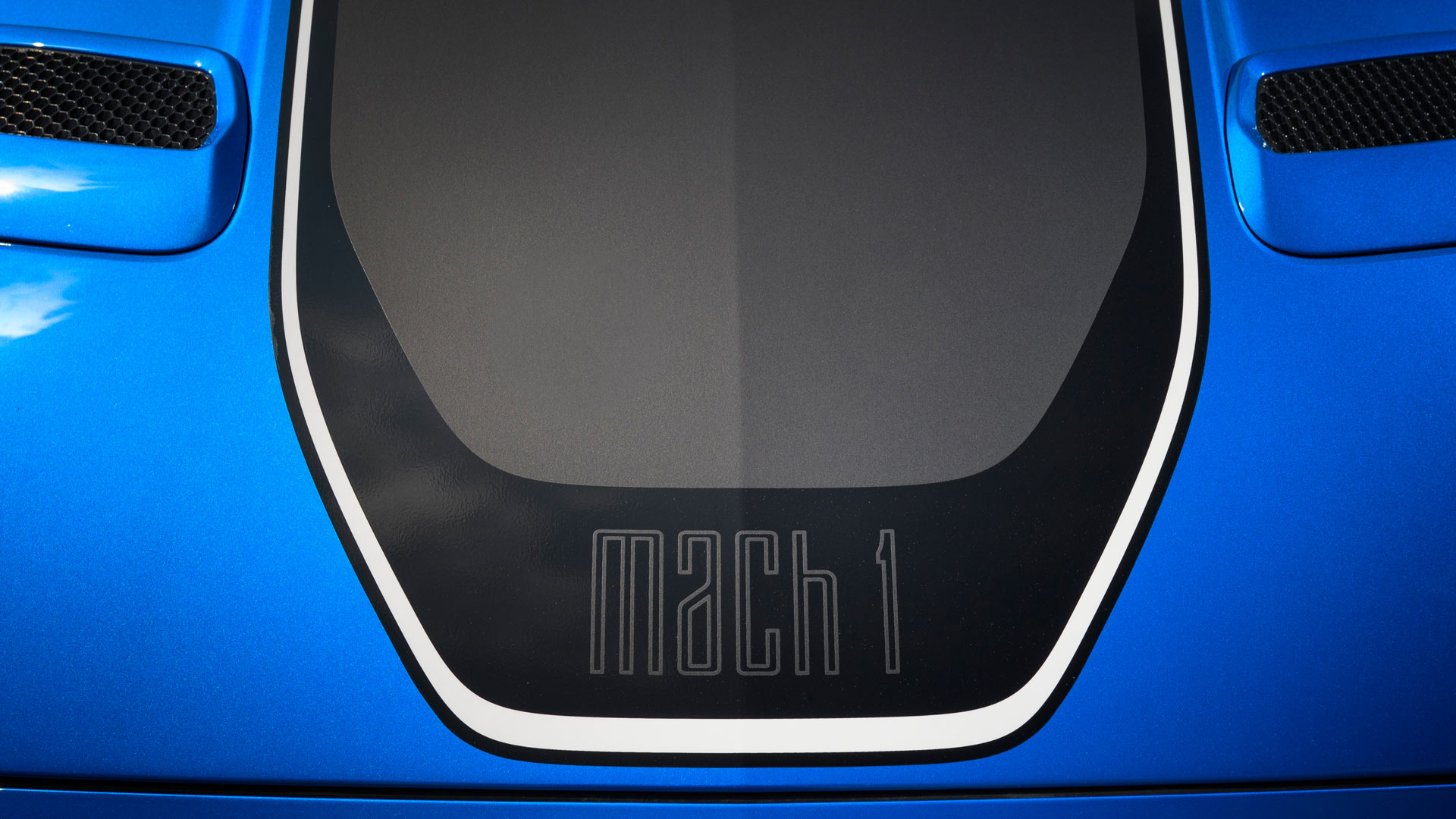
The Mach 1 name is taken from the term used to denote when something is travelling at the speed of sound. Ford had first used the Mach 1 badge on the futuristic Levacar concept, first shown in 1959.
Created by Gale Helderman, who also designed the Mustang, Levacar Mach 1 was a hover car that floated on a cushion of air. Even if the radical Levacar came to nothing, the Mach 1 name clearly stuck with Ford executives for future use.
1967 Ford Mach 1 Concept
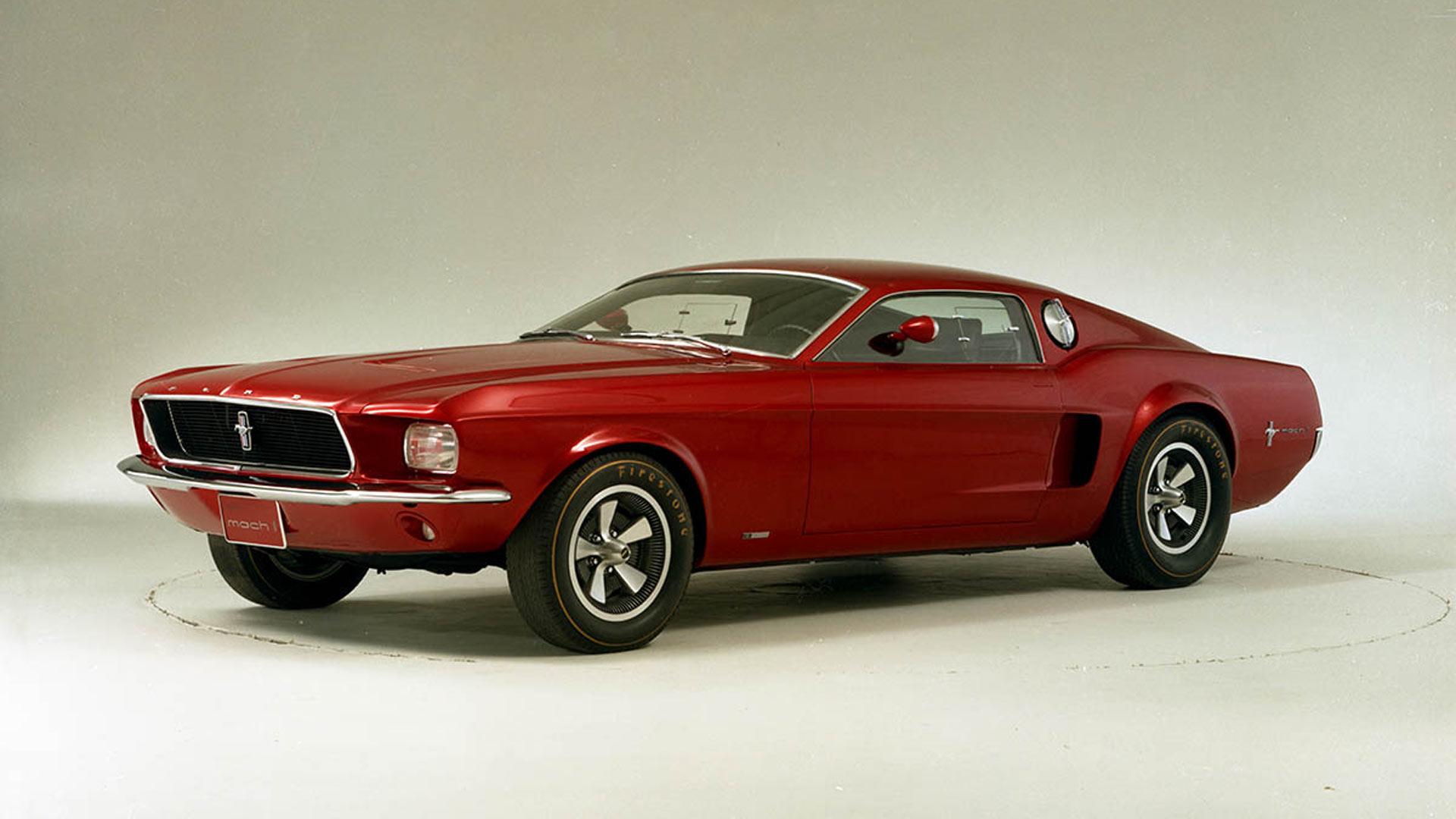
Ford would use the Mach 1 title on a number of Mustang concepts, including this one from 1967. Despite the original pony car having only been launched in 1964, the company was already experimenting with how the Mustang might evolve.
Ford was determined to take the Mustang from a simple sports car into a more muscular machine. The low, sweeping, roofline previewed the shape of the facelifted 1969 Mustang, although the square headlights would be ditched.
1969 Ford Mustang Mach 1
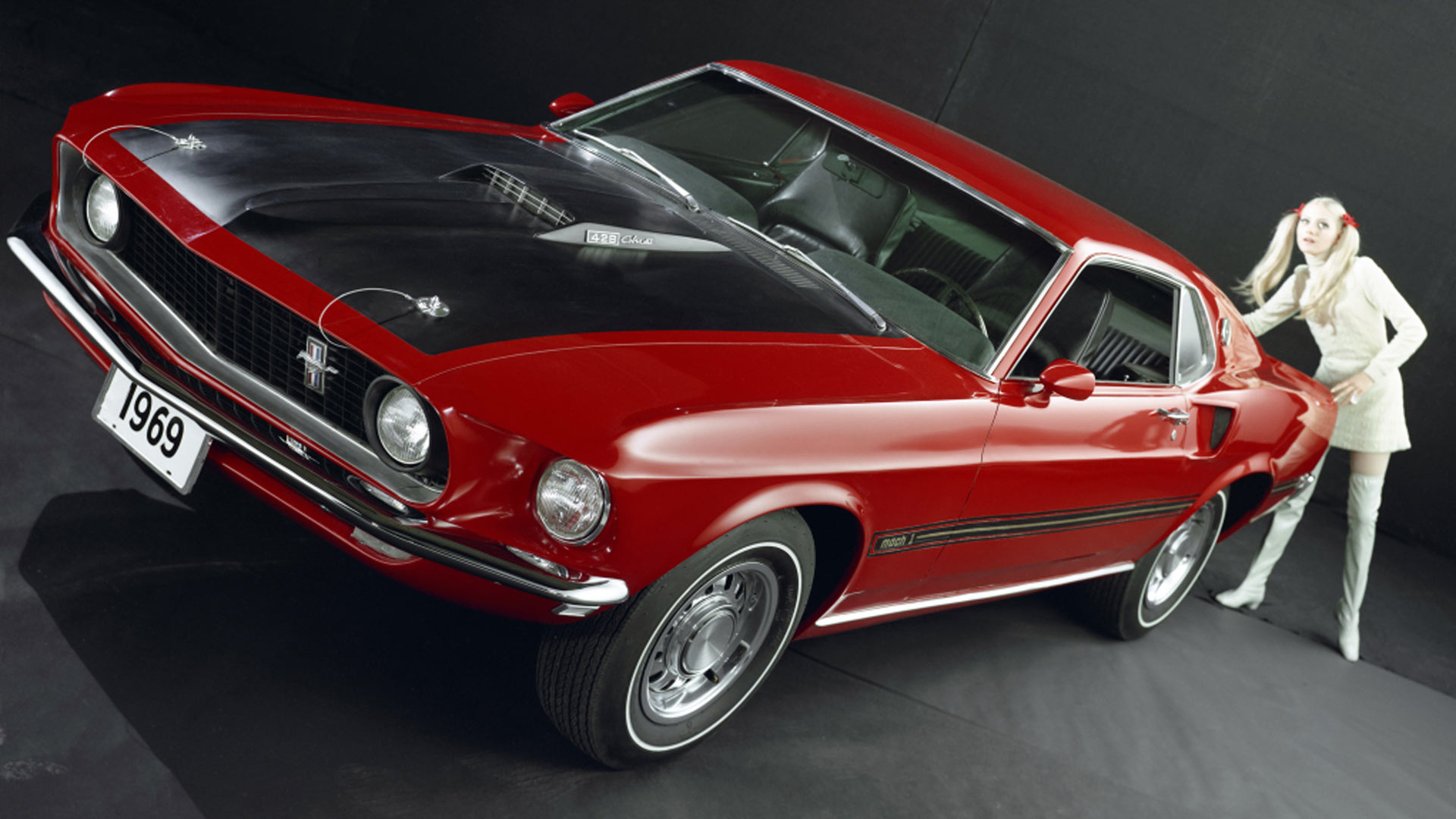
For Mustang fans, 1969 represented a notable highpoint for performance offerings. Along with Shelby models and the new Boss 429, Ford also released the first-generation of the Mustang Mach 1.
Offered only in the Sportsroof fastback design, it came with upgraded suspension and a host of visual extras. This included the option of a ‘Shaker hood’, intended to feed cool air directly into the engine.
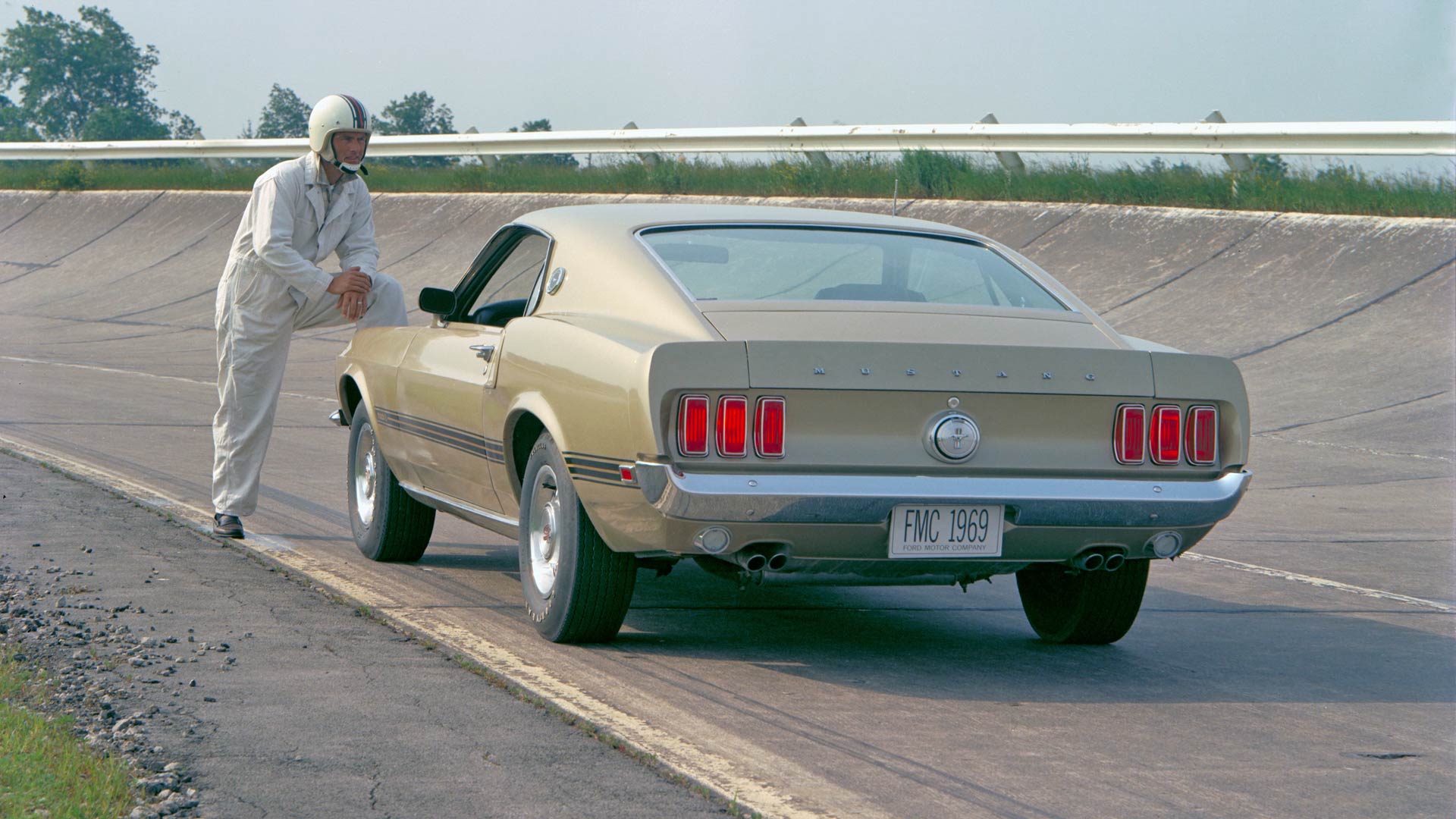
The big story was, literally, beneath the bonnet. Ford offered the 351-cubic inch (5.8-litre) Cleveland V8 as the basic option for the Mach 1. This came with 250 hp and 355 lb-ft of torque, but could be upgraded to 290hp and 385lb-ft with the ‘M-Code’ option.
A bigger 390-cubic inch (6.4-litre) V8 with 320hp was also available, but the big talking point was the infamous Cobra Jet V8. Displacing a huge 428-cubic inches (7.0-litre), this motor produced 335hp and 440lb-ft of torque.
It turned the Mustang into a serious performance car, and helped see the Mach 1 set almost 300 speed and endurance records. The Mach 1 would also be used to win back-to-back SCCA Manufacturer’s Road Rally Championships.
1970 Mercury Cougar Eliminator
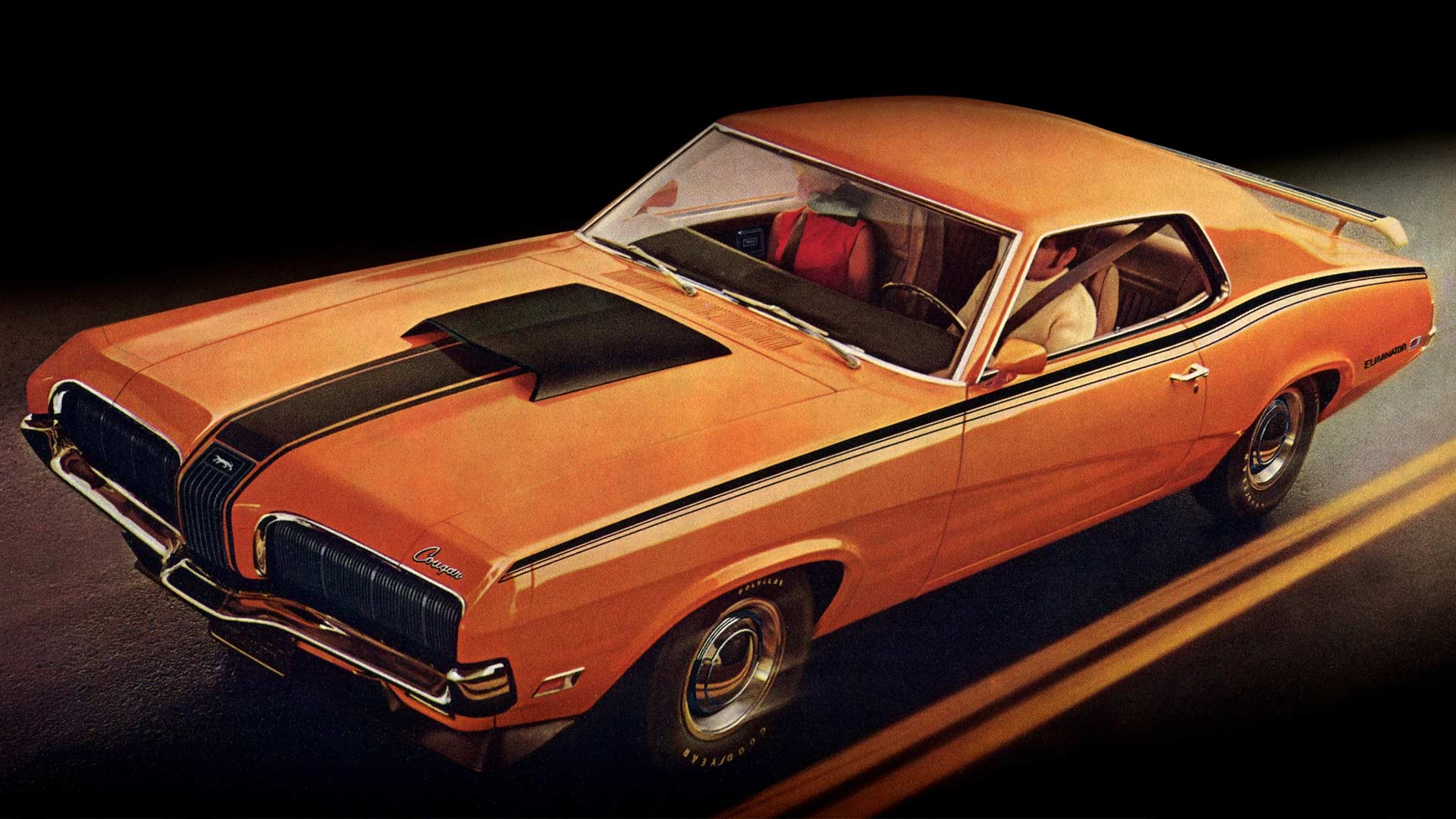
Sold as the upmarket alternative to the Ford, the Mercury Cougar shared most mechanical parts with the Mustang. This included a version of the Mach, badged as the Cougar Eliminator.
Performance suspension, a front splitter, large rear spoiler, and fancier wheels were the main parts of the Eliminator option package. The same engine options as the Mach 1 were included, although the special 290hp Boss 302 V8 was a Cougar exclusive.
1970 Ford Mustang Mach 1
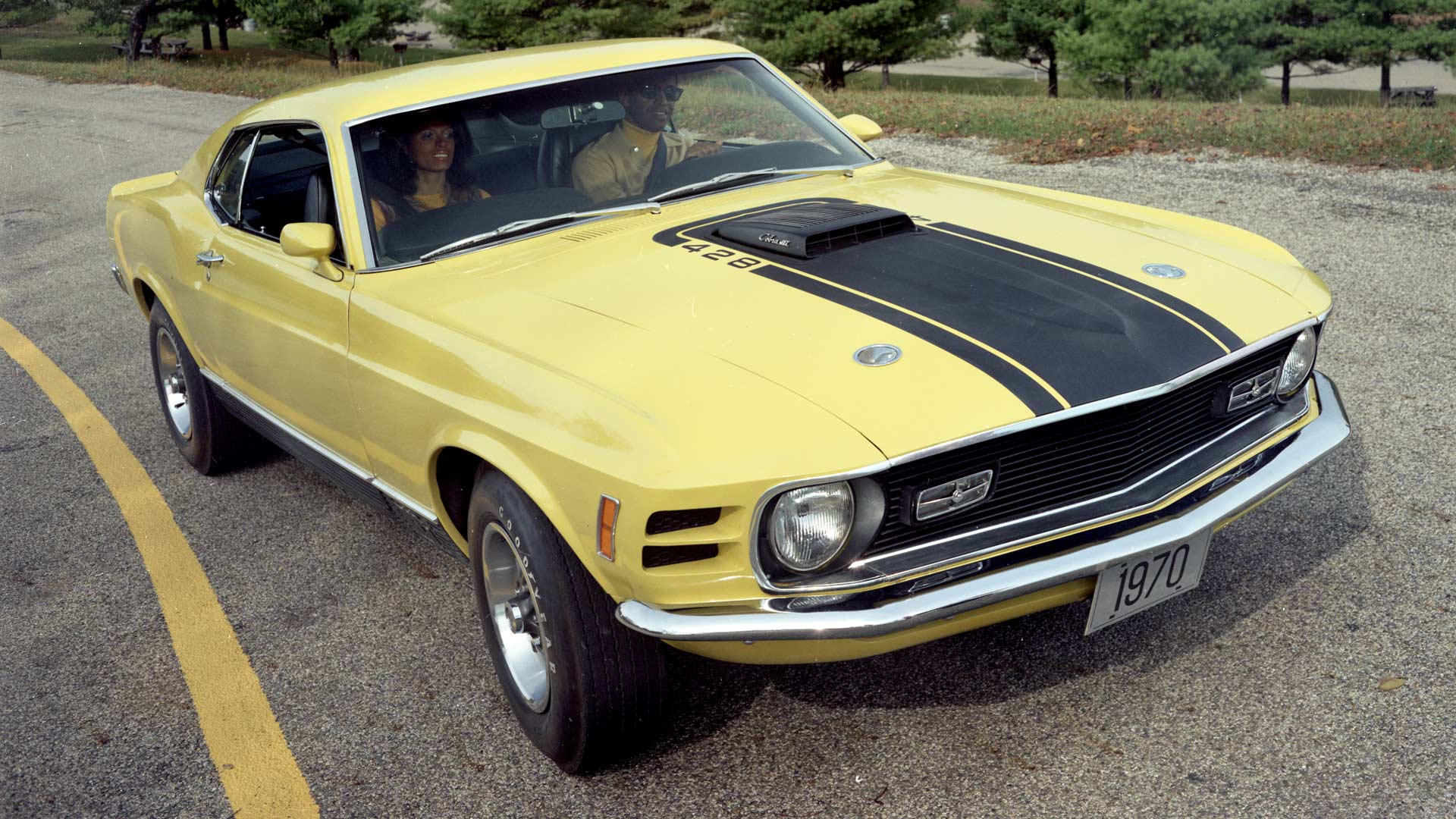
Having clearly been impressed with the success of the Mach 1 in 1969, Ford left the 1970 model relatively unchanged. A wider front grille saw the inclusion of dual-beam headlights, whilst the rear of the Mach 1 gained new honeycomb detailing.
Even the engine options remained largely unchanged, other than the M-Code version of the 351 Cleveland V8 being pushed to 300hp. With sales of more than 40,000 examples, over 20 percent of all Mustangs sold in 1970 were Mach 1 versions.
1971 Ford Mustang Mach 1
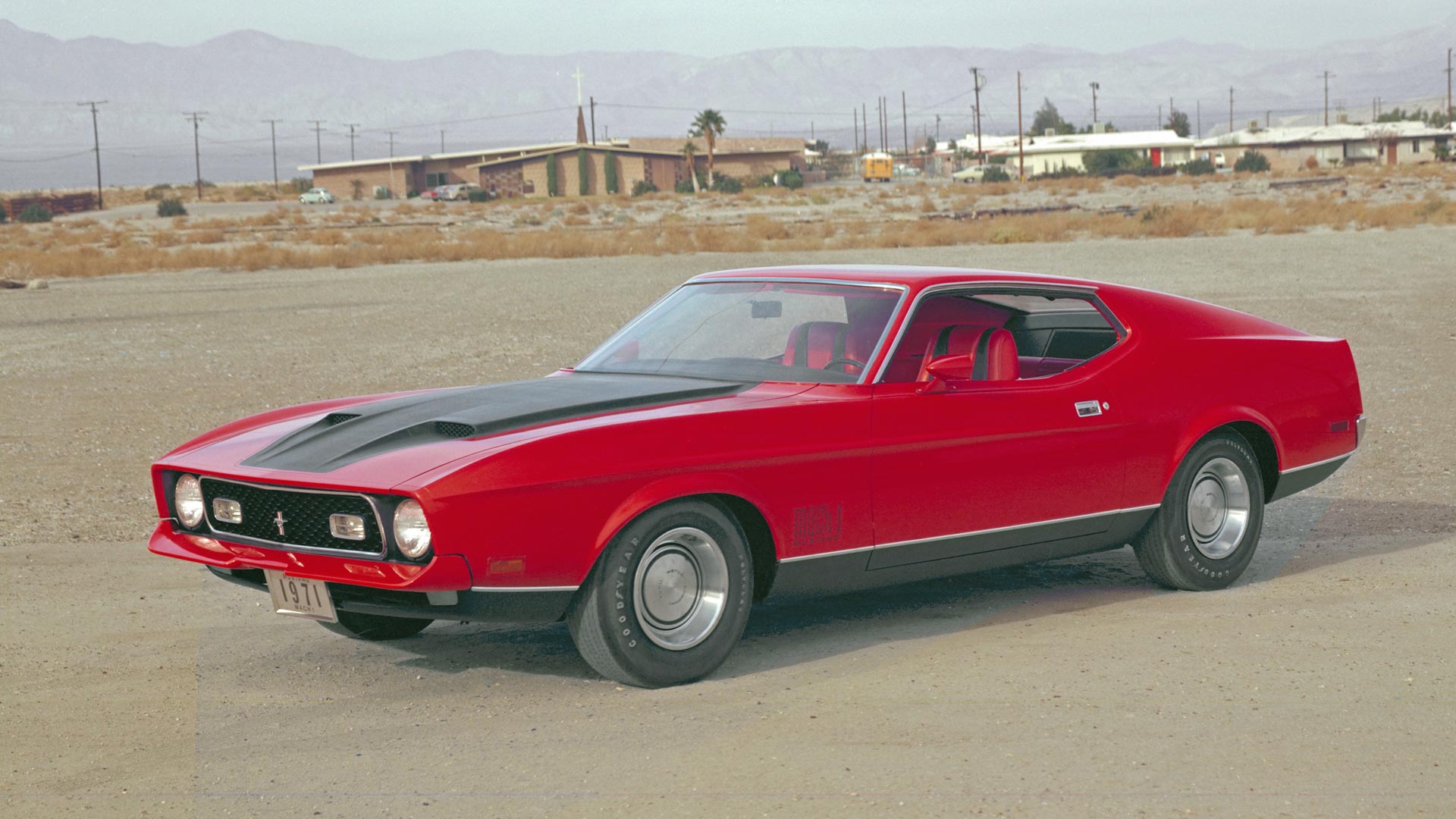
With Ford locked into a fierce battle to produce the biggest and best muscle car, the 1971 Mustang grew bigger than ever before. Stretched in length, width, and weight, the new ‘Stang was ready-made to accept big-block engines. Despite that change, this would be the final year for the giant 429-cubic inch Cobra Jet V8, which now offered 370hp.
One of the most noticeable exterior changes was the matte black bonnet, featuring two air scoops. An optional ‘Ram Air’ package could be ordered to direct air straight into the carburettor.
1973 Ford Mustang Mach 1
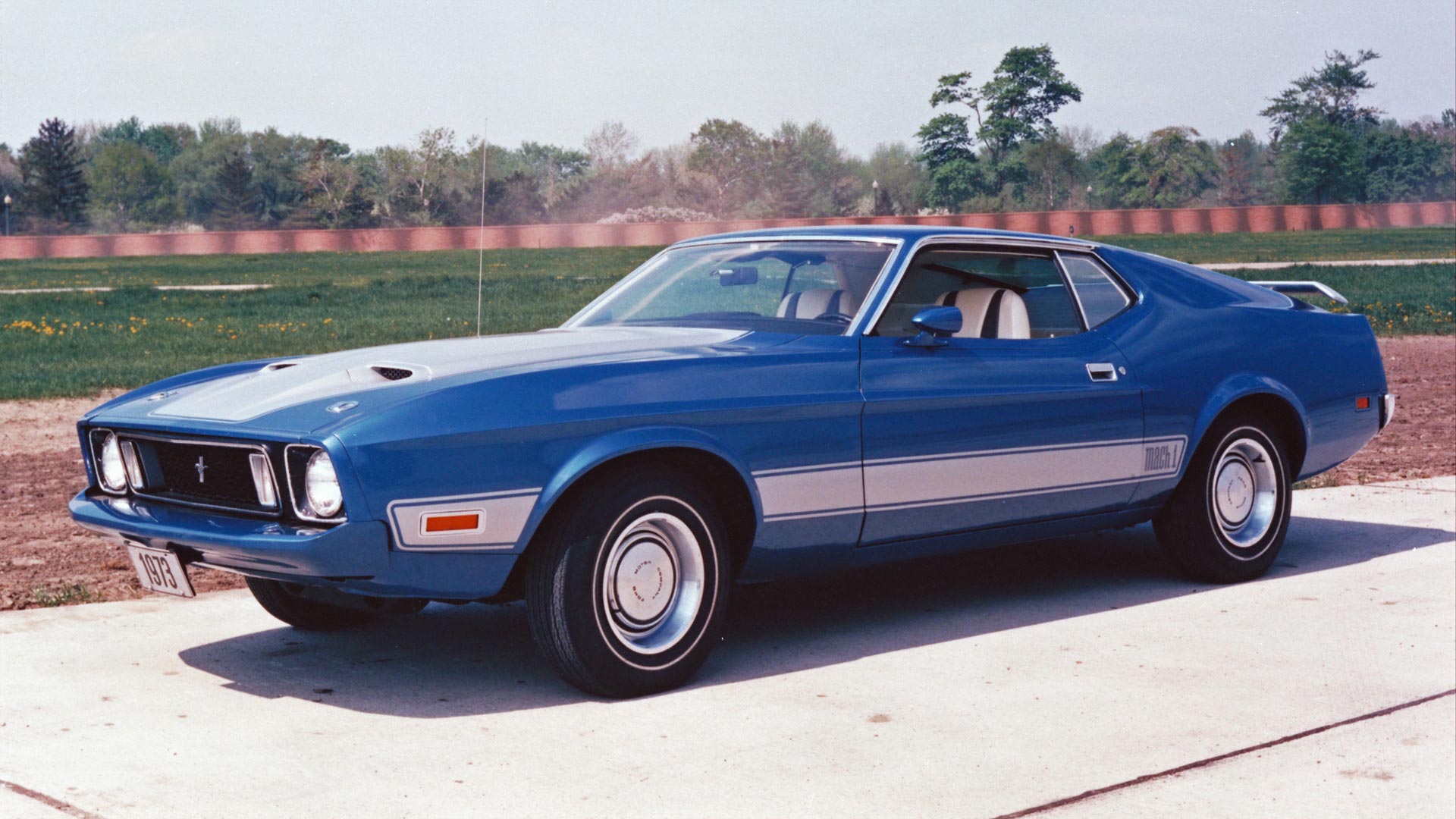
Increasing insurance prices and new emissions regulations meant that classic muscle cars were on borrowed time by 1973. The Mach 1 did not escape, with Ford having reduced engine options the previous year.
This would also be the final year for the first-generation Mustang, with Ford planning an all-new model for 1974. Keen financial incentives still saw plenty of Mach 1s sold in 1973, with some 35,000 finding homes.
1974 Ford Mustang II Mach 1
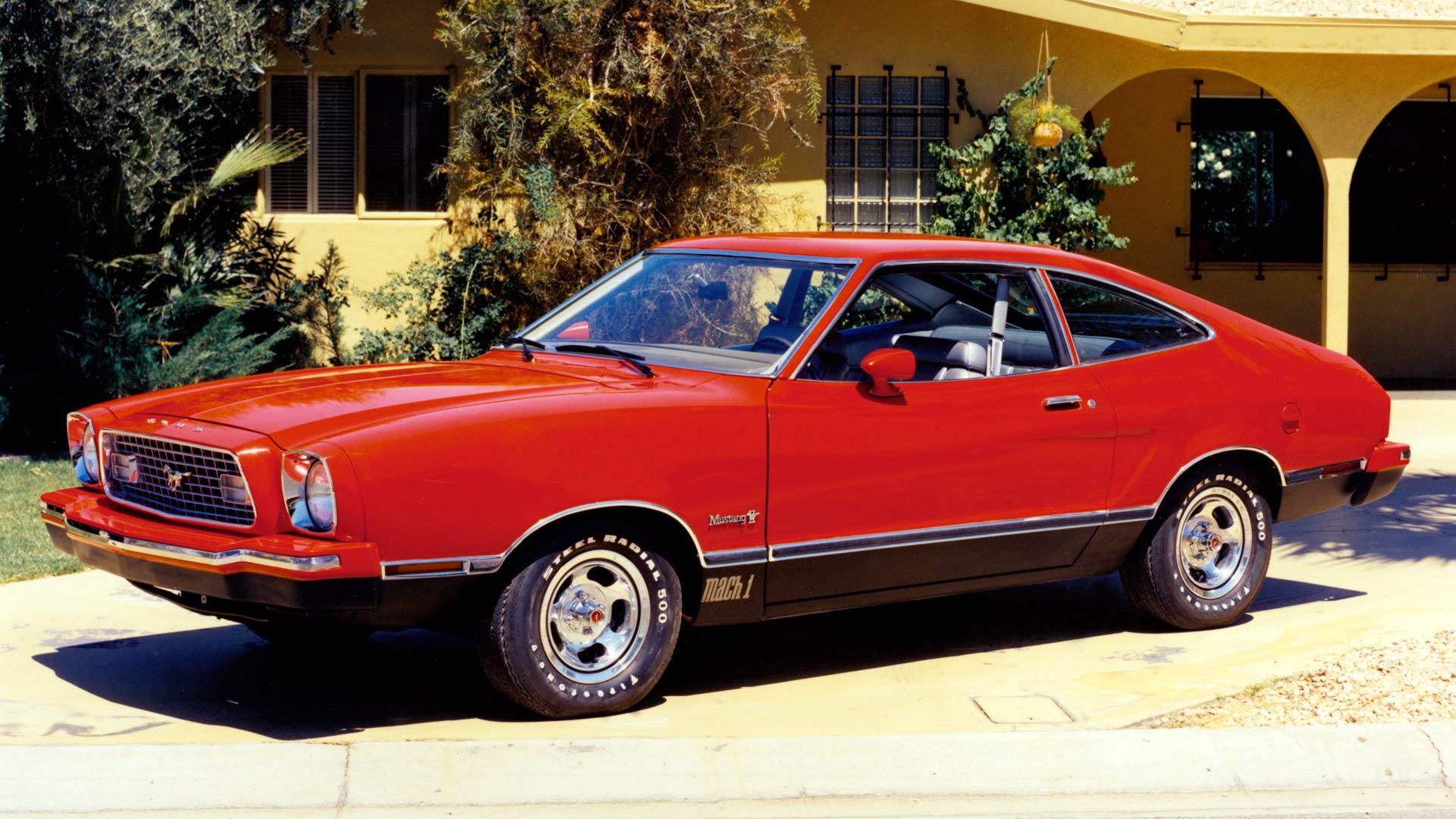
Reduced in stature, and fitted with smaller engines, the second-generation Mustang is typically glossed over by Ford fans. The backdrop of the 1973 oil crisis had made a downsized sports car a timely move. It meant the Pinto-based Mustang II sold surprisingly well, with over 330,000 assembled in 1974.
There was still a Mach 1 version for 1974, though it was little more than a styling exercise. Power came from the 2.8-litre Cologne V6, delivering just 105hp.
The following year would see the return of the V8 Mach 1, with a 140hp 302-cubic inch (4.9-litre) unit available.
2003 Ford Mustang Mach 1
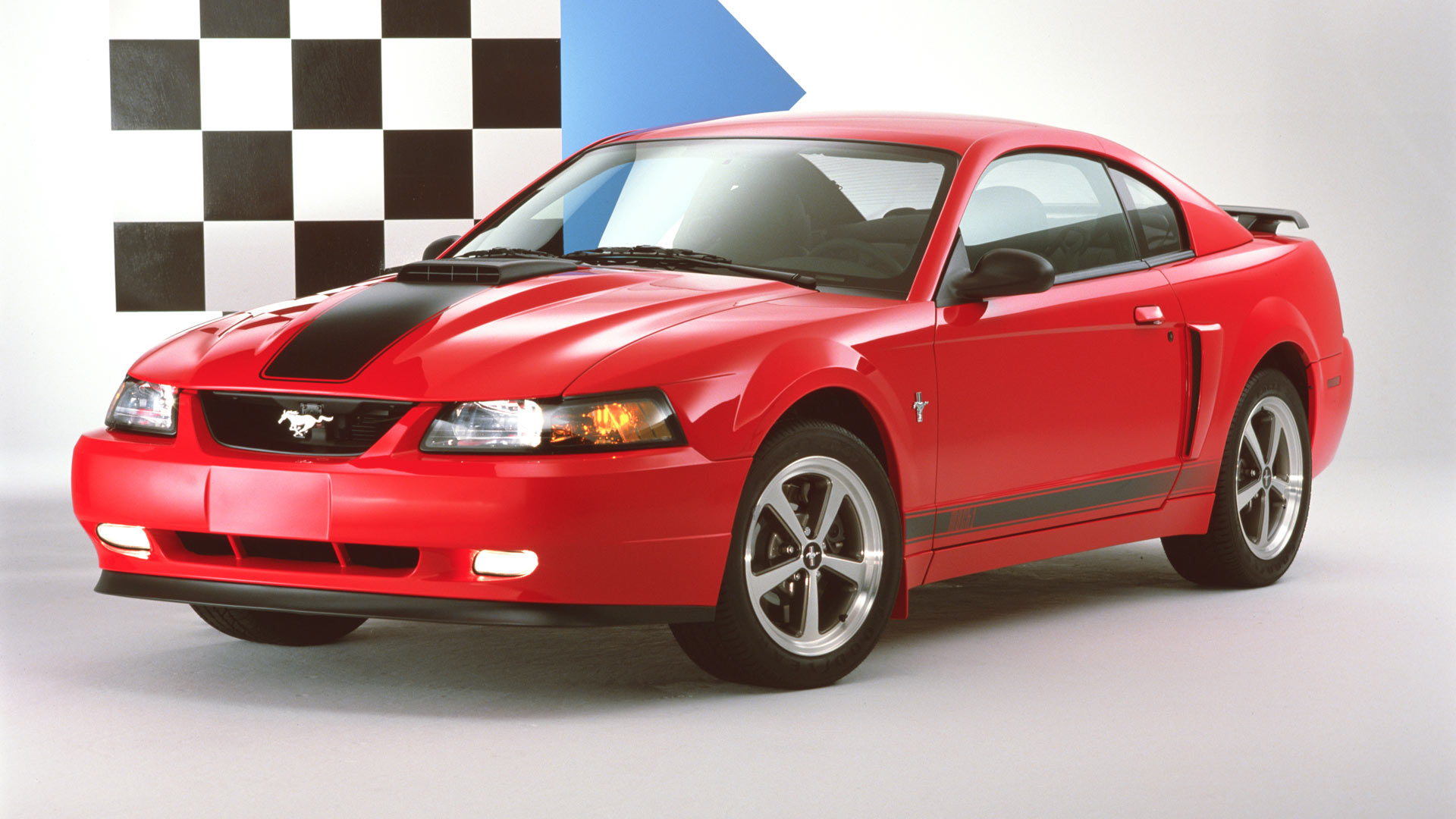
After the end of Mustang II production in 1978, Ford waited until 2003 to bring back the Mach 1 badge. Launched as a retro-inspired limited edition, it made use of the established fourth-generation Mustang.
The Mach 1 was chosen to plug a gap between the regular Mustang GT, and the high-performance SVT Cobra. It came with just one engine option, an upgraded version of the 4.6-litre Modular V8. A special exhaust, new rear spoiler, and bespoke alloy wheels were all included.
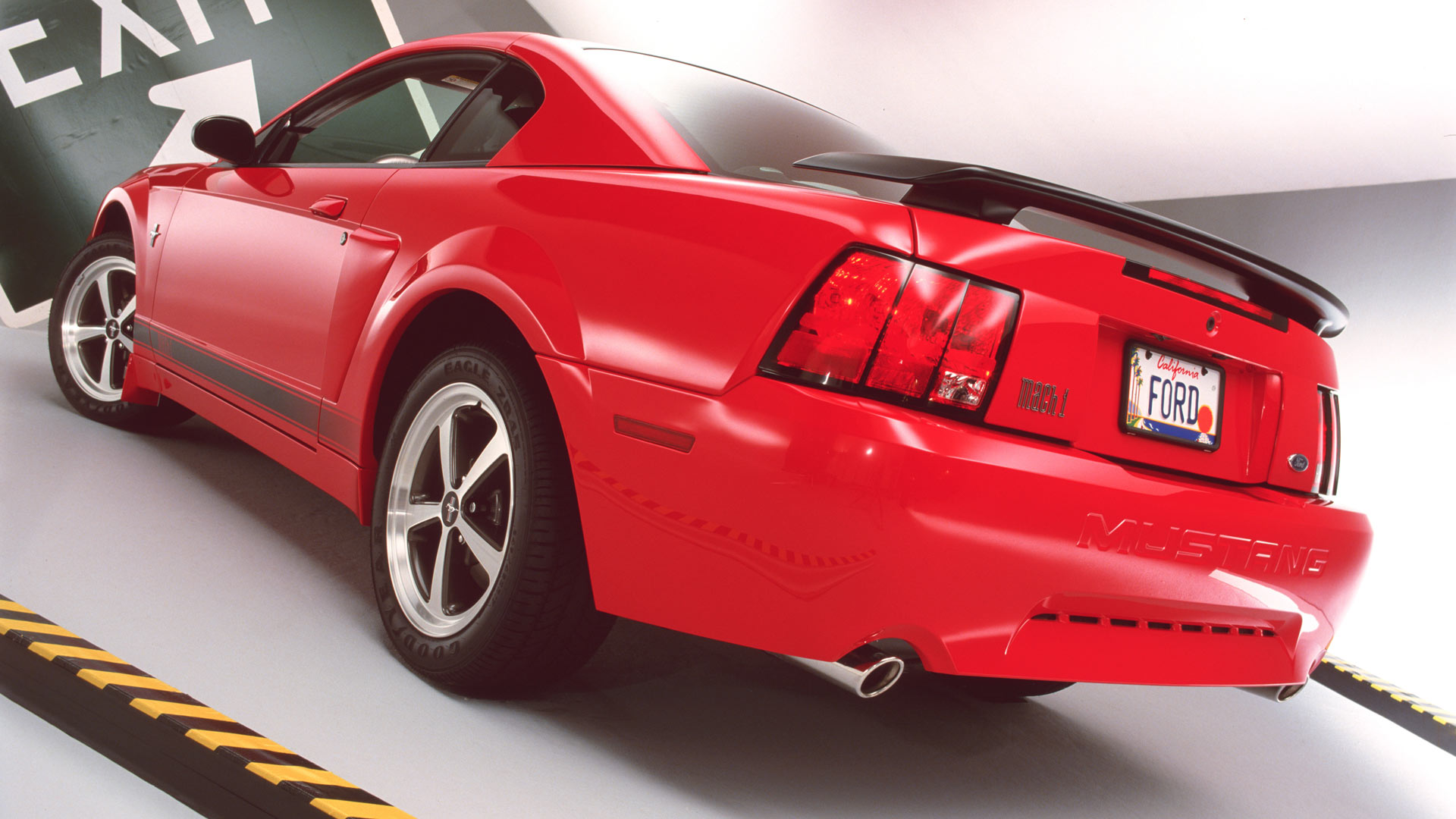
With an output of 305hp and 320lb-ft of torque, it meant this new Mach 1 was much more like the originals from the 1970s. The hood scoop sitting above it was actually functional, whilst Ford ensured the Mach 1 had plenty of classic decals and badges for good measure.
Time-limited due to the end of fourth-generation Mustang production, Ford sold 9,650 Mach 1s in 2003. The following year would see 7,180 examples produced, making this version one of the rarest Mach 1 creations.
2020 Ford Mustang Mach-E
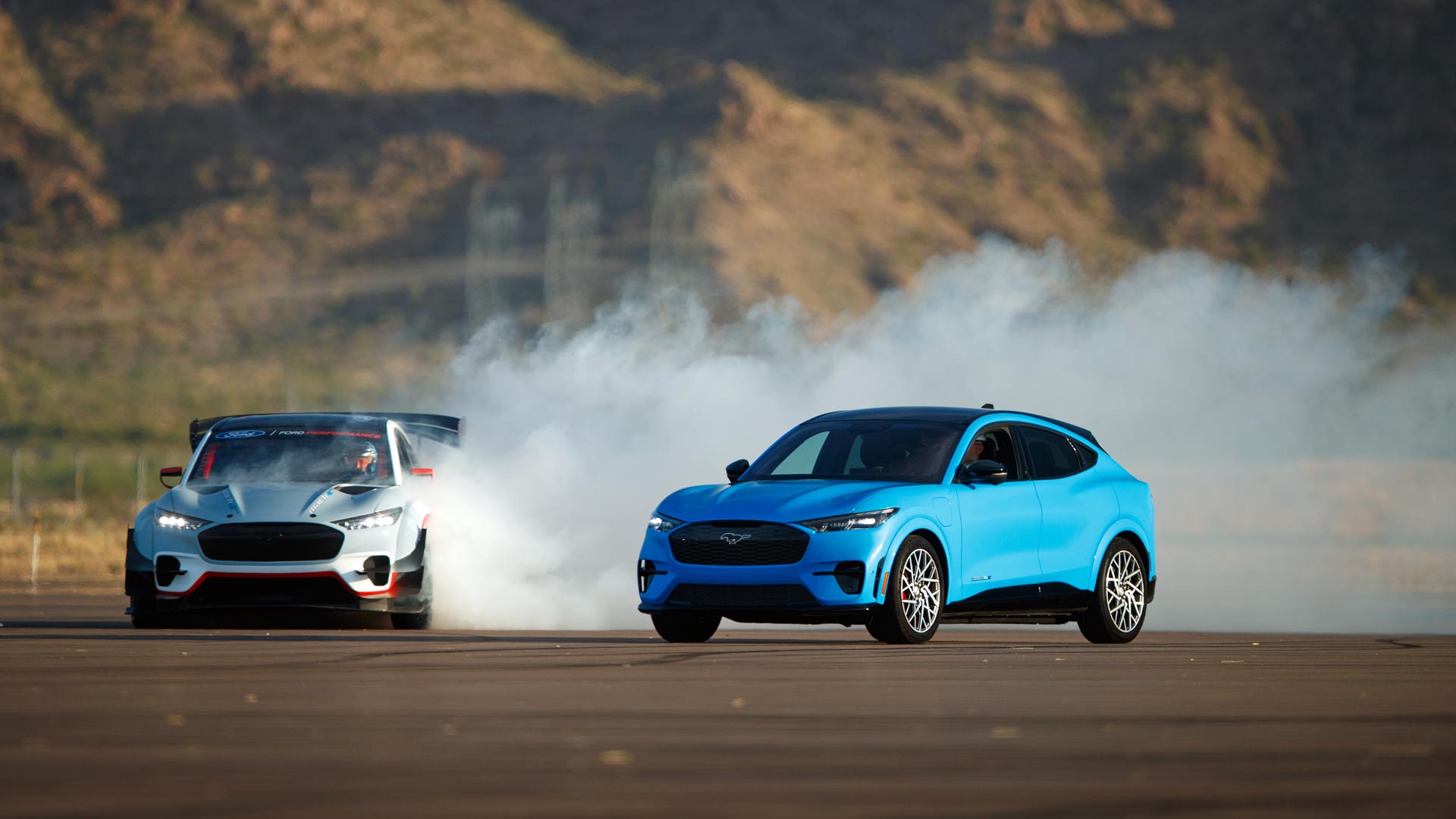
To the shock of many Blue Oval fans, Ford not only used the Mustang badge for an electric crossover, but the Mach label as well. Being branded as the Mach-E points to the battery propulsion underneath, but also the potential performance on offer.
Ticking the right options for the Mach-E can result in a four-wheel drive SUV with 469hp. This means the ability to accelerate from 0-60mph in under 3 seconds for the GT version. Whilst it may not have a V8, the Mach-E does at least channel the spirit of the Mach 1.
2021 Ford Mustang Mach 1
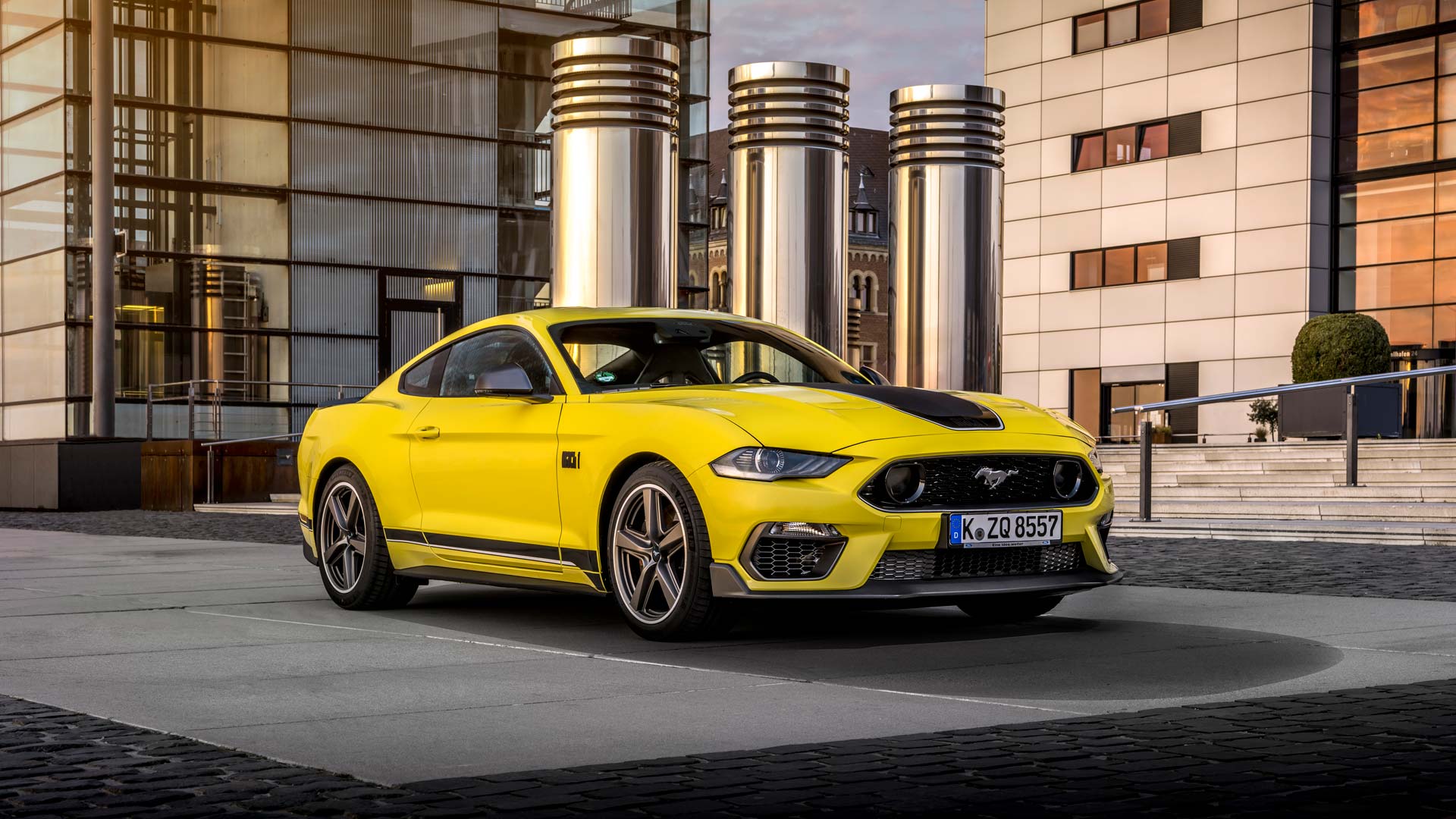
After another lengthy break, the actual Mustang Mach 1 is back in action. That Ford is selling the special performance version around the world also marks a major first. Using parts taken from performance Shelby models, Ford is not messing around with this Mach 1.
Power comes from the 5.0-litre ‘Coyote’ V8 engine, which will deliver European buyers with 460hp. Buyers will be able to pick from the Tremec six-speed manual gearbox, with rev-matching on downshifts. On upshifts, the driver is able to select the next gear without even taking their foot off the throttle.
A ten-speed automatic transmission will be on the options list, with a limited-slip differential fitted whichever box is ticked.
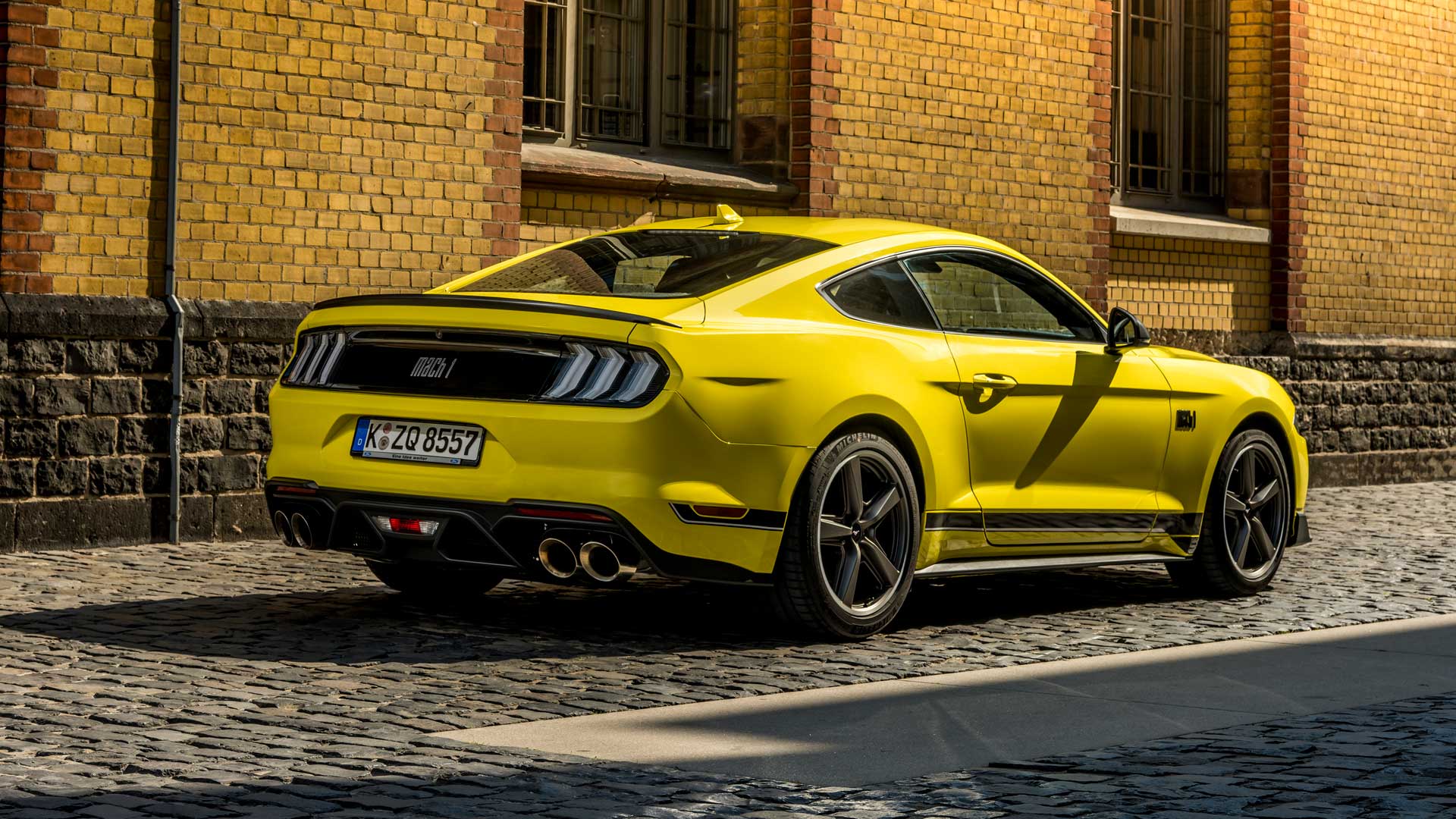
Other key changes include a new front grille, featuring faux imitation driving lights to look like the 1969 original. Bright colour choices will be matched with contrasting body stripes, with retro-style Mach 1 decals also included.
Parts such as the special rear diffuser are not just for show. Compared to a regular Mustang GT, the Mach 1 will generate 22 percent more downforce. An array of oil coolers, and bespoke performance suspension, will make it suited to time spent on track.
Despite the performance edge, luxurious Ebony leather seats are fitted to the Mach 1. Manual-equipped cars get a retro cueball-style gear knob, although a 12-inch digital dashboard is suitably modern.
ALSO READ
Frank’s Dream Garage: critiquing the great car designs on YouTube



[…] Mach in time: The story of the Ford Mustang Mach 1 […]
[…] The new Coyote crate motor offers a hefty 460 horsepower, combined with 420 lb-ft of torque. That’s substantially more power than any Mercury Cougar would have left the factory with, beating even the ultra-rare GT-E model. […]
[…] will feature many races over the weekend, Friday plays host to a special night race. A field of Ford Mustangs will challenge a squad of motorsport-prepared classic Mini […]